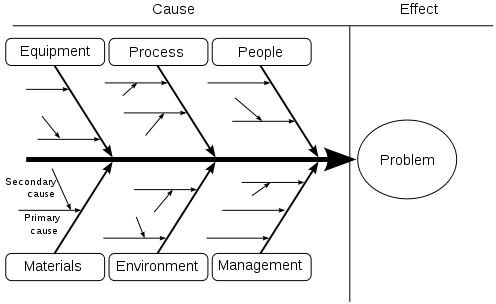Quality Control Techniques
Introduction
Various techniques of quality control have been developed. The more prominent of them are: Just-in-time, Quality at Source, Quality Circle, Inspection, Statistical Quality Control and Total Quality Management. A brief description of each is as follows.
1. Just-in-time (JIT): JIT has different interpretations. For some, it is buying materials on time, for some others, it means planning and controlling production on the shop floor, and for others it is a philosophy of production that covers every aspect of organizations Allows For our purpose, JIT is seen as a technique of quality control. Just as JIT has different interpretations, it also has different names. For some companies, for example JBM, continuous flow manufacturing
JIT helps in achieving quality, as it is a philosophy that seeks to continuously improve production processes and methods. In particular, JIT contributes to high product quality in the following ways:
1. Production is highly standardized. Workers do standard work every day. They are familiar with their works. Familiarity ensures high quality.
2. In-process inventories are greatly reduced by cutting down on size. Therefore, any interruptions stop production until the problem is resolved. In this way, JIT has been called a system of applied problem solving. Now, this stagnation in production forces everyone to solve the quality problem, so that the defects are not repeated. Therefore, high product quality is ensured.
3. Suppliers of materials supply best quality materials under the JIT system. Many companies do not even inspect suppliers' materials; Rather, the emphasis is on working with suppliers to produce the right parts and materials.
4. The JIT system envisages the use of automated equipment and robots in production processes. The use of such sophisticated machines will ensure high product quality.
5. The JIT system also envisages the use of intensive preventive maintenance programs to prevent any kind of machine from breaking. It produces the best quality parts in machines.
6. Workers are responsible for producing parts of perfect quality or zero defect, before being passed on to the next quality operation.
Quality at the source
Where workers are made responsible for producing parts of perfect quality before they pass to the next operation, the concept of quality at source emerges. The employee is placed on the driver's seat to control product quality. The underlying quality principles at source are:
1. Every laborer's job becomes a quality control station. The worker is responsible for inspecting their own work, identifying any defects and working in non-defects and fixing any cause of the defect.
2. Statistic quality control techniques are used to monitor the quality of product parts produced at each work station, and easy-to-understand charts and graphs are used to communicate progress to workers and managers.
3. Every worker has the right to stop the production line to avoid production of defective parts.
4. Workers and managers are organized into quality circles, who analyze quality problems and mistakes, work to implement programs to solve problems and improve product quality.
Inspection
The task of determining conformity or non-conformity of expected performance is the act of inspection. In other words, by inspection, a manager wants to determine the acceptability or non-acceptance of parts, products, or services. The basis of inspection is usually a specification, called an inspection standard. Product quality is inspected by comparing it to the standard.
When to inspect is the next relevant question. In general, inspection is desired at -
1. Know the finished products and parts, whether the correct parts are to be assembled or when the products are correct shipped;
2. Before processing an expensive.
3. Automatic machine output from time to time, so that possible errors are limited to a small amount, and
4. Prior to an operation that cannot be undone, for example, in mixing paint.

Comments